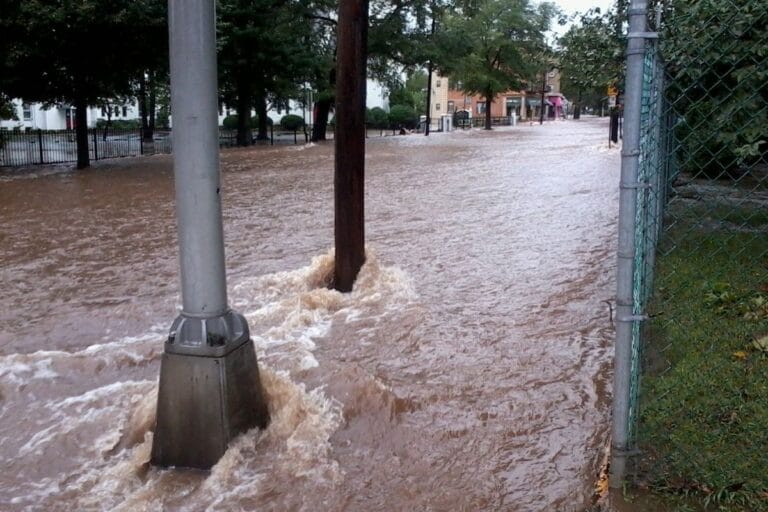Setting People Straight on Six NFIP Myths
Every time the NFIP comes up for renewal by Congress there are always those who call for doing away with the entire program. Some in Congress don’t think the NFIP matters in their district at all. The Senate Authorizing Committee chair is from Idaho, and sees wildfire as far more important to his state than floods. And during the high wildfire season this year, one can see why he thinks that. The House Committee chair says the NFIP is not important in his district because they don’t have flooding in Dallas? This one is a little harder to comprehend.
When explaining or discussing the NFIP, we find many common misconceptions people
have. These beliefs have existed so long, we can now call them “myths.” Like all myths, they start with a grain of truth, but are then extrapolated to a false outcome or to blame the wrong cause or party. Let’s explore how you might be able to respond to these major misguided beliefs to help educate folks.
Myth one: The NFIP is $24.6 billion in debt because FEMA manages it poorly.
RESPONSE: The NFIP debt was caused by Congress, not FEMA.
Congress directed the NFIP to subsidize premiums for buildings built before the community map was in place–and left those directives in place for 44 years. There are about 1 million subsidized premiums (20% of the 5 million policies). Congress directed the NFIP to set premiums to cover the average loss year, and ignore catastrophic loss years. Congress pushed rates quickly to actuarial in the 2012 reauthorization. To no one’s surprise, in 2014 Congress changed some rules and quickly rolled back some of the increased rates, but did keep them on long-term path to actuarial.
Myth two: The NFIP is just an insurance program.
RESPONSE: Absolutely wrong. THE NFIP IS THE NATION’S ONLY COMPREHENSIVE FLOOD RISK MANAGEMENT PROGRAM with four components
- Flood mapping to identify and map flood-risk areas;
- Floodplain management to protect people and development in the high flood-risk areas;
- Flood mitigation (ICC and FMA) to help reduce risk to existing property; and
- Provide flood insurance so those living at risk pay at least part of the cost of that risk.
The 2012 and 2014 reforms were focused on insurance rates. The 2017 reauthorization in
the House again is mostly focused on insurance, whereas the Senate bills to date are more comprehensive.
Myth three: Some states are “donor” states and should pull out of the NFIP.
RESPONSE: Florida says it has paid more in premiums than received in claims. Well, that is called insurance–just like auto or other insurance, it protects you financially for the big loss.
If Hurricane Matthew in 2016 had gone 75 miles west, Florida would be a receiver state for a long time. California dodged a bullet when Oroville Dam’s near failure happened last year–same outcome.
Myth four: The increase in premiums (1) was to pay off the debt from Katrina and Sandy or (2) resulted in poor people and inland states subsidizing the rich people on the coast.
RESPONSE: Wrong. The premiums are set to pay for future flooding, not past flooding. The poor or inland states do not subsidize coastal states. NFIP sets rates for A zones (mostly rivers) and V zones (coastal velocity zones) separately. Each pays for rates based on their zone and the elevation of the first floor in comparison to the BFE.
Myth five: There are barriers to private flood insurance to prevent them from selling flood insurance.
RESPONSE: Private insurers expanding since 2012 provided language that allowed private
flood policies as long as the policy is “as least as broad as” the NFIP policy to protect the consumer.
Private flood insurance now has about 200,000 policies in the nation and growing. Many
2017 bills based on the false assumption that the private market is unable to compete right now, which data demonstrates is not the case.
Myth six: The NFIP encourages people to build and stay in high flood-risk areas.
RESPONSE: As stated above, this one has a grain of truth in it, but in the past there was
no assistance available–BUT: If owner has assistance they will mitigate, so in 1994 ICC was added to flood policy.
ICC is triggered to provide mitigation assistance if substantial damage/substantial improvement happens. The cost of that can be from $50,000 to over $100,000 to elevate or mitigate. Even if people had flood insurance, it did not cover the cost of mitigation. The local floodplain manager was under pressure to not say home is substantially damaged unless there is funding help. Unless mitigated, the home will be damaged again.
ICC is probably the most effective mitigation tool we have. And these ICC provisions in the draft bills would demonstrate Congress is beginning to understand the value and cost-effectiveness ($4 return for every $1 in mitigation funding) of mitigation assistance to reduce the loss of life and property.
While the above is not a comprehensive list of all the NFIP myths, it hits the big ones–and goes on to say how we can address some of them and improve the NFIP.


